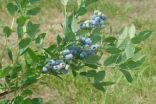Delay in performing appendectomy not associated with adverse outcomes
2010-09-21
(Press-News.org) Delays of 12 hours or more before surgery do not appear to adversely affect 30-day outcomes among patients undergoing appendectomies for acute appendicitis, according to a report in the September issue of Archives of Surgery, one of the JAMA/Archives journals.
"Appendectomy is the most common emergent surgical procedure performed worldwide, with appendicitis accounting for approximately 1 million hospital days annually," the authors write as background information in the article. "Increased time from onset of symptoms to operative intervention is associated with more advanced disease. Recent developments in imaging and antibiosis have afforded improved preoperative assessment and treatment, allowing for non-operative management of abscesses and phlegmons [diffuse inflammation of the soft or connective tissue due to infection] and potentially limiting the need for immediate operative intervention to halt disease progression."
Angela M. Ingraham, M.D., M.S., of the American College of Surgeons (ACS), Chicago, and colleagues studied data from 32,782 patients treated at hospitals participating in the ACS National Surgical Quality Improvement Program who underwent an appendectomy for acute appendicitis between 2005 and 2008. Of these, 24,647 (75.2 percent) had surgery within six hours of being admitted to the hospital, 4,934 (15.1 percent) after more than six through 12 hours and 3,201 (9.8 percent) after more than 12 hours.
After 30 days, there were no significant differences in complications or deaths between the three groups. Operations were longer for those who waited (51 minutes for those who had surgery within six hours vs. 50 minutes for those between six and 12 hours and 55 minutes for those who waited more than 12 hours) but these differences were not clinically meaningful. Length of hospital stay was also statistically significantly different but not clinically meaningful (2.2 days for the more than 12-hour group, compared with 1.8 days for the other two groups).
"Because of the growing issues surrounding access to emergency care and specialist coverage, care for emergency general surgery patients is increasingly the responsibility of acute care surgeons and specialized services, which cover the specialties of trauma, emergency general surgery and critical care," the authors write.
"As the elderly population continues to increase, the medical needs of patients presenting for emergency general surgical care will become increasingly complex and will demand additional resources and attention. Because of potentially limited physical and professional staffing resources, an acute care surgeon may need to delay the operation of less critically ill patients to appropriately care for those requiring immediate attention," they conclude.
INFORMATION:
(Arch Surg. 2010;145[9]:886-892. Available pre-embargo to the media at www.jamamedia.org.)
Editor's Note: Please see the article for additional information, including other authors, author contributions and affiliations, financial disclosures, funding and support, etc.
ELSE PRESS RELEASES FROM THIS DATE:
2010-09-21
About half of women who require radiation therapy after they have had a mastectomy and immediate breast reconstruction develop complications that necessitate a return to the operating room, but pre- or post-mastectomy chemotherapy does not appear to be associated with the need for additional procedures, according to two reports in the September issue of Archives of Surgery, one of the JAMA/Archives journals.
An increasing number of women are undergoing mastectomy as a treatment for breast cancer or as a means to prevent cancer if they have a genetic predisposition, according ...
2010-09-21
High blood glucose levels after surgery may be an important risk factor for infection at the surgical site in patients having general surgery, according to a report in the September issue of Archives of Surgery, one of the JAMA/Archives journals.
Surgical site infection accounts for 14 percent to 17 percent of hospital-acquired infections, making it the third most common type of infection acquired at health-care facilities and the most common among patients having surgery, according to background information in the article. "Studies have shown that these infections prolong ...
2010-09-21
About one in ten U.S. adolescents uses sunless tanning products, and an intervention promoting these products as an alternative to regular tanning may reduce sunbathing and sunburns among adult women, according to two reports in the September issue of Archives of Dermatology, one of the JAMA/Archives journals.
Ultraviolet radiation exposure was recently upgraded to the highest cancer risk category and is the most common avoidable cause of skin cancer, according to background information in the articles. Sunless tanning products offer an alternative method of achieving ...
2010-09-21
Botulinum toxin treatment appears to offer a temporary, short-term solution to relieve drooling in children diagnosed with certain neurological disorders, according to a report in the September issue of Archives of Otolaryngology – Head & Neck Surgery, one of the JAMA/Archives journals.
"Recent estimates suggest a prevalence of [drooling in] nearly 60 percent in children in special care school, of which 33 percent could be classified as severe," the authors write as background in the article. "Depending on the associated neurological disorder, cognitive abilities and ...
2010-09-21
Severe injury to the esophagus can occur after a child swallows a disc battery, according to a report in the September issue of Archives of Otolaryngology–Head & Neck Surgery, one of the JAMA/Archives journals.
"A disc battery is an increasingly common foreign body ingested by children," the authors write as background information in the article. The American Association of Poison Control Centers reported a total of 2,063 disc battery ingestions in 1998; the number increased 80 percent during the next eight years. When the battery is lodged in the esophagus, its alkaline ...
2010-09-21
Patients who seek a second surgery to revise their rhinoplasty often do so because they are dissatisfied with the symmetry of their nasal tip and because they experience nasal obstructions, according to a report in the September/October issue of Archives of Facial Plastic Surgery, one of the JAMA/Archives journals. Surgeons who examine revision rhinoplasty candidates cite slightly different findings than patients, suggesting that communication about nasal aesthetics could be improved.
Approximately 5 percent to 15 percent of patients who have rhinoplasty [plastic surgery ...
2010-09-21
Analysis of seagull droppings has revealed that one in ten carry 'superbug' bacteria, resistant to the last-resort antibiotic Vancomycin. Researchers writing in BioMed central's open access journal Proteome Science investigated 57 migratory seagull samples recovered from an island off the coast of Portugal.
Gilberto Igrejas from the University of Trás-os-Montes and Alto Douro, Portugal, worked with a team of researchers to carry out the study. He said, "We used a novel technique called proteomics to detect the maximum number of bacterial proteins which are thought to ...
2010-09-21
Berkeley — When it comes to conducting complex tasks, it turns out that the brain needs rhythm, according to researchers at the University of California, Berkeley.
Specifically, cortical rhythms, or oscillations, can effectively rally groups of neurons in widely dispersed regions of the brain to engage in coordinated activity, much like a conductor will summon up various sections of an orchestra in a symphony.
Even the simple act of catching a ball necessitates an impressive coordination of multiple groups of neurons to perceive the object, judge its speed and trajectory, ...
2010-09-21
SPRINGFIELD, MO—The American elderberry is showing promise as a profitable commercial fruit crop. Traditionally used for making jelly, juice, and wine, elderberry is becoming increasing important in North America's burgeoning "nutraceutical" industry. Historically, elderberries have mostly been harvested from the wild; researchers have made recently made efforts to select or develop improved cultivars. Increased interest and emerging markets are encouraging scientists to develop improved elderberry cultivars that yield consistent, superior production. Scientists from the ...
2010-09-21
GRIFFIN, GA—Blueberry aficionados will soon have a tasty, colorful new variety for their backyard gardens. Blueberry experts D. Scott NeSmith and Mark K. Ehlenfeldt introduced 'Blue Suede™' in a recent issue of HortScience. The new southern highbush blueberry (Vaccinium hybrid) was released by the University of Georgia's College of Agricultural and Environmental Sciences, the University of Georgia Agricultural Experiment Station, and the U.S. Department of Agriculture–Agricultural Research Service. 'Blue Suede™' is targeted for sales to the home gardener market.
According ...
LAST 30 PRESS RELEASES:
[Press-News.org] Delay in performing appendectomy not associated with adverse outcomes

